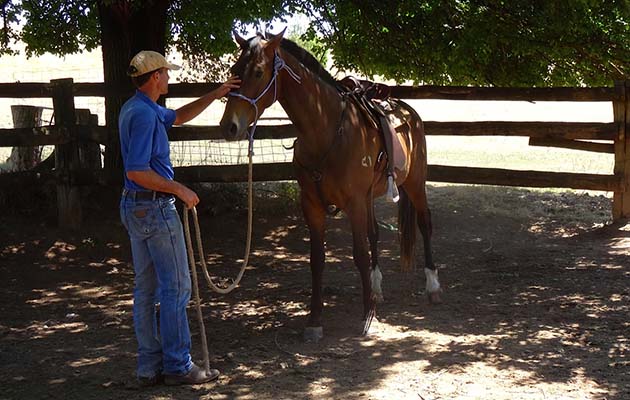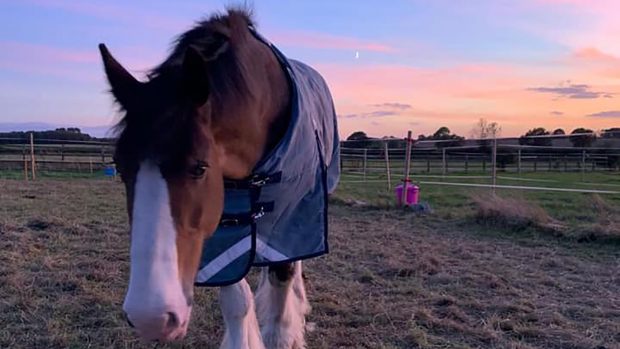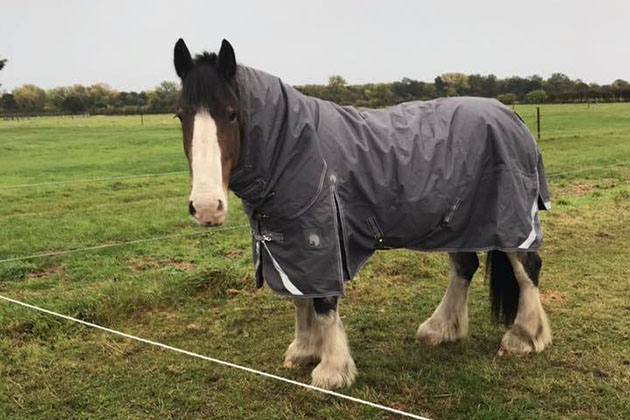At the risk of sounding smug, we are enjoying beautiful sunshine and 30ºC heat out here in Australia. Penny and I brought our children Jack and Rosie out for the holidays to spend time with their Australian cousins. After a week at the idyllic Mollymook beach, we are now back at “Silver Hills”, the property I grew up in. It’s 4,000 acres of sheep and cattle country backing onto the Snowy Mountains in New South Wales. Although there have been some hard years of drought, the land is looking great at the moment, which is reflected in the health and sleekness of the stock — I can’t remember seeing the cattle look so fat and well!
As for the horses, my family is still very involved in breeding and training thoroughbreds and Australian stock horses. Cameron, my brother-in-law, works with youngstock in the racing industry up in Queensland while my other brother-in-law, Will Weston, and my sister Sandra are still playing top level polocrosse. They also need to horse their five children, the oldest two having represented New South Wales in 2014. As a result my father, Doug, still breeds about six mares a year; a couple whose progeny are destined for the local racetracks and the rest Australian Stock Horses with varying amounts of thoroughbred blood in them.
As always, it feels great to get back to my roots and it brings home striking differences between the way things are done out here to how we keep and train horses in the UK. As an example, I’ll run through my first morning here at the farm.

The youngsters that have just been started are all out in the “front paddock”, which is about 30 acres. To bring them into the yards, we simply drive the Ute out to round them up. The youngsters are saddled and left while we go back out in the Ute to check out a mare that was due to foal. Settled under a tree with another mare and a mob of cows for company, the mother and her new foal (pictured above and top) look a picture of health. Apart from putting some feed on the ground for the mare, we don’t intervene any more and let nature do its work.

Back to the youngsters in the yard and although they were still a little touchy on the ground (pictured above), they were calm and relaxed when I rode them. After a couple of laps of the round pen, I was able to take them straight out into the hills where any extra energy is quickly used up. We have used a lot of the same bloodlines over the years so we can predict which ones are going to be jumpy or stubborn or be the smartest to train.
After the rides, we drove over to another block of land on the Tumut River where we needed to drench (worm) the yearlings. As foals, we tend to handle them enough so they get used to being around humans, but then they are largely left alone to grow up. In order to drench them, it took a while to round them up into the cattle yards so we could get a rope over their necks. Once we had them there we spent about five minutes with each one, giving them a thorough check over and letting them to relax in our presence, before letting them go back into their equine paradise again (pictured below)!

All of the horses, from the valuable top performance horses to the youngstock, work on the farm. One of the main things I tell clients is to give their horse a purpose to their rides and I can’t think of a better way to educate young horses or fitten the older horses than checking on and moving cattle around the hills of “Silver Hills”! They are definitely not mollycoddled or viewed as pets and as a result are tough, fit, sound and very rarely do they display any behavioural or ridden problems.
It is difficult to get the same type of work into the horses in the UK as so often the weather, lack of space and increased traffic on the roads prevents us from giving our horses the long rides they need or keep them in a natural environment turned out with their mates. I am lucky at my yard in Kent to have 100 acres to ride around and plenty of turnout. During the winter, my own competition horses get turned out as a herd and left alone as much as possible. I love seeing them in a natural environment and watching them interact with each other and I have no doubt that they appreciate their time to be proper horses too.
So with Christmas and the New Year on the horizon I hope everyone has a wonderful time with friends, family and of course your horses too. I’ll have a think about my resolutions for 2015 and let you know what next year has in store in my next blog when I’ll be back to work, refreshed and raring to go!
Jason



